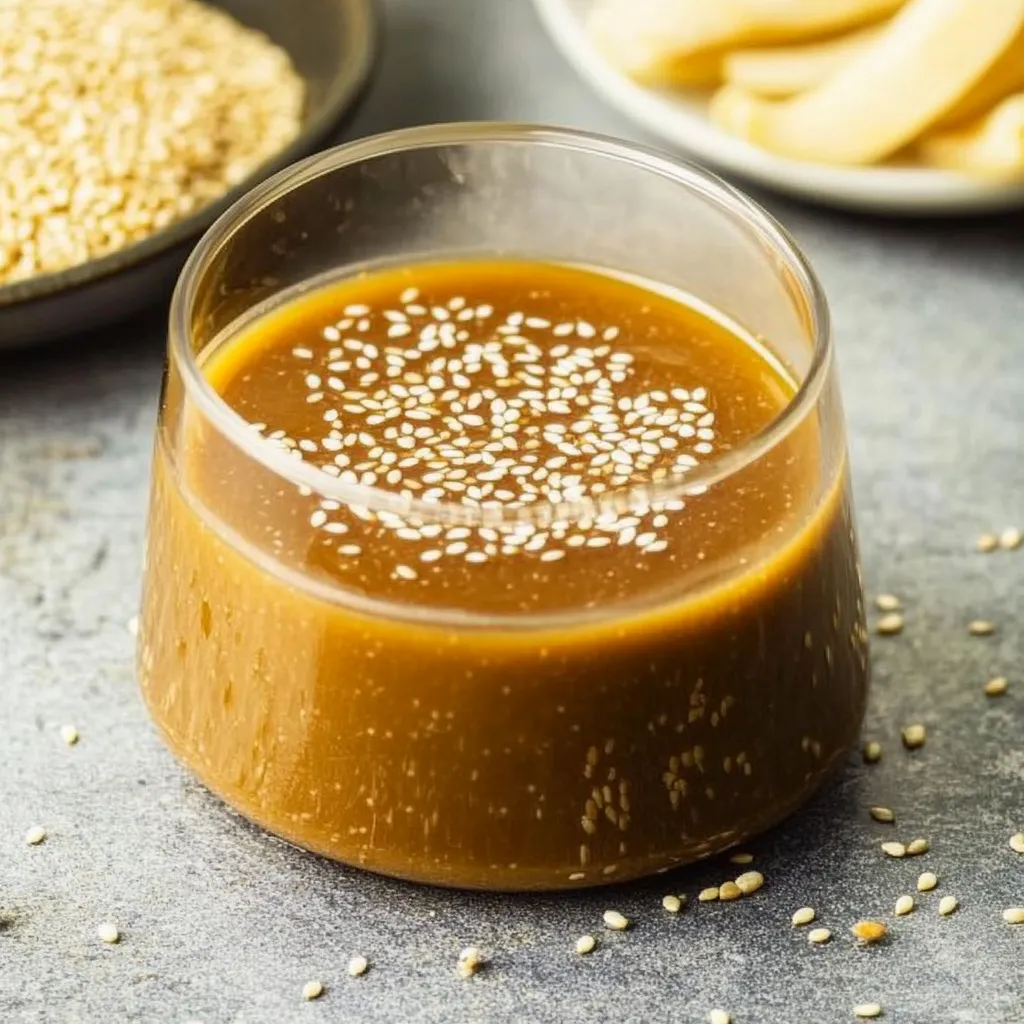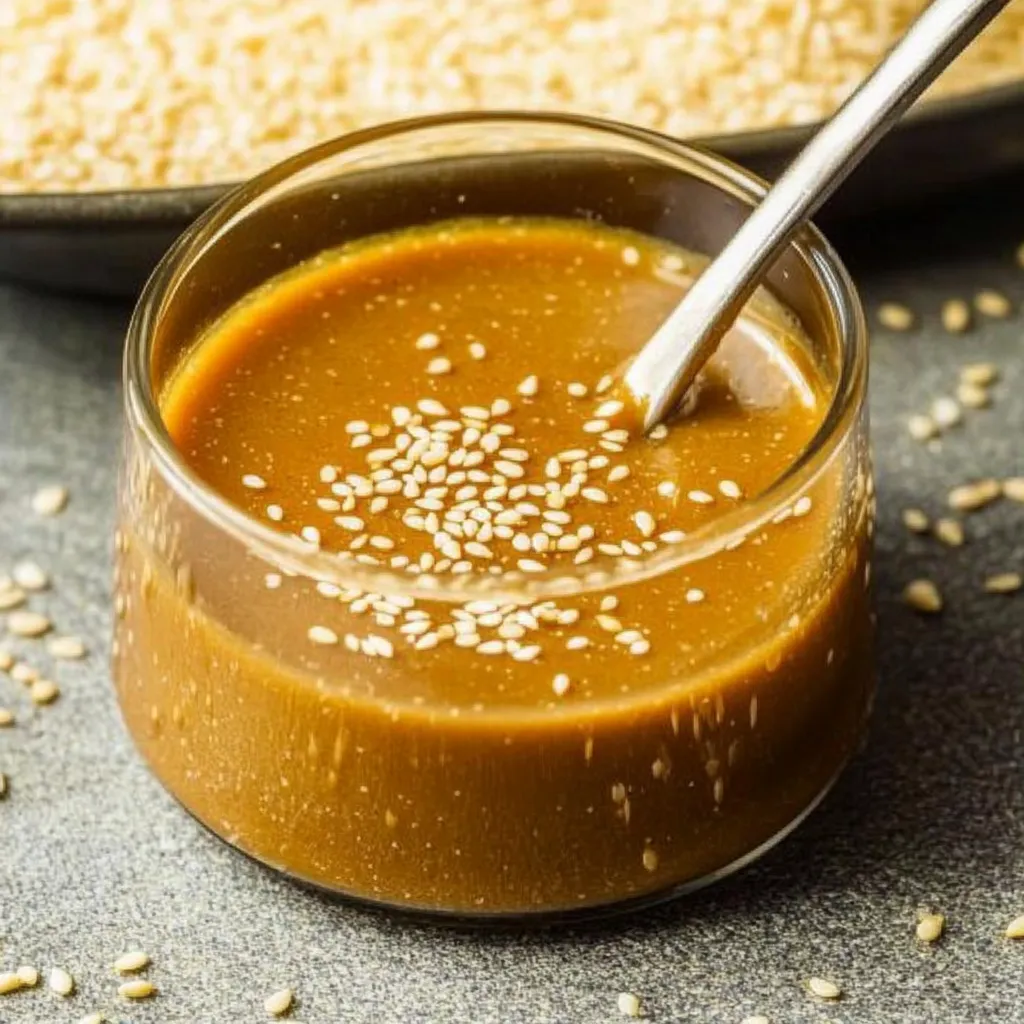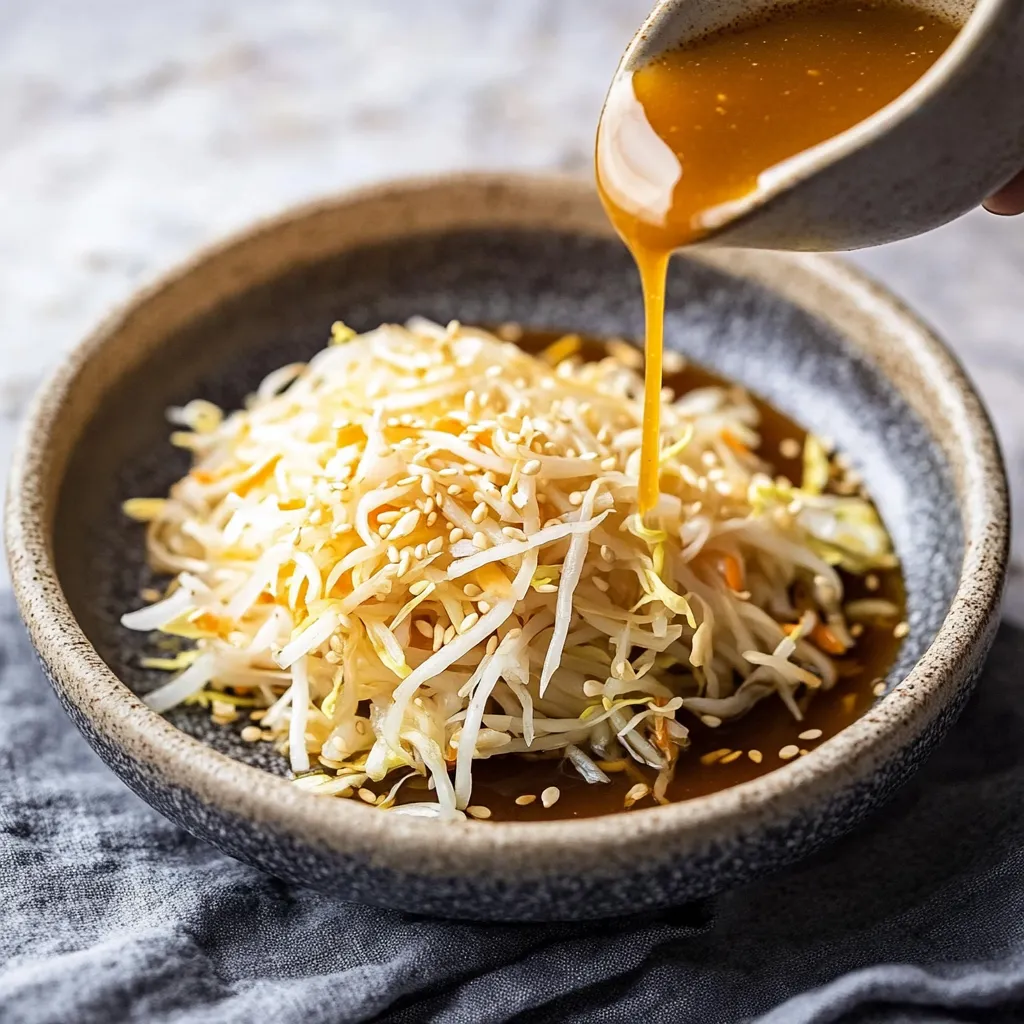 Pin it
Pin it
Japanese sesame sauce is a wonderfully nutty and versatile staple that brings rich umami depth to salads, noodles, and grilled vegetables. Its creamy texture and balanced sweet-tangy notes make it one of those condiments I always keep ready for last-minute meals or fresh spring rolls. This homemade version is fresher and more customizable than anything you will find bottled at the store, plus it comes together fast with pantry ingredients you probably already have.
I discovered the magic of this sauce at a small Tokyo soba shop where the owner poured something similar over a chilled noodle bowl. Since then I have made it dozens of times and it never fails to impress my guests.
Ingredients
- White sesame seeds: You want seeds with an even pale color and a fresh nutty aroma. Get unhulled or pre-toasted for boldest flavor.
- Rice wine vinegar: Go for the unseasoned kind with no added salt or sugar for the cleanest taste.
- Soy sauce: Try a naturally brewed variety for deeper flavor and less harsh saltiness.
- Roasted sesame oil: Make sure it is toasted for a rich and aromatic finish.
- Neutral vegetable oil: Choose canola or grapeseed for a silky texture that does not overpower.
- Brown sugar: Light or dark are both fine, and check for soft moist clumps for freshness.
- Fresh ginger: Pick firm bright knobs and mince just before using for a sharp bite.
Step-by-Step Instructions
- Toast the Sesame Seeds:
- Even if you bought pre-toasted seeds, give them a quick heat in a dry skillet over medium heat. Stir or shake them constantly for about five minutes or until they are evenly golden and you catch a nutty, popcorn-like aroma. This step is key for coaxing out maximum flavor.
- Grind the Seeds:
- Transfer the hot seeds immediately to a mortar and pestle, spice grinder, or food processor and work them into a fine powder. You want some texture left, but aim to break most seeds for rich flavor and a creamy mouthfeel.
- Mix the Sauce:
- Scoop the sesame powder into a sturdy jar or bowl. Add the rice vinegar, soy sauce, roasted sesame oil, neutral oil, brown sugar, and minced ginger. Put a lid on and shake hard or whisk everything together until the sugar dissolves and the mix looks creamy and homogenous.
- Taste and Adjust:
- Taste a little with a spoon. If you want it sweeter, add a pinch of sugar. For a thicker sauce, add a bit more ground sesame. Taste and tweak until you have your perfect balance of nutty, sweet, tangy, and salty.
- Ready to Serve:
- Pour the sauce into a clean jar. Use right away or pop it in the fridge for later. It gets even better after an hour of chilling.
 Pin it
Pin it
Sesame is my favorite part of this recipe. It transforms the sauce into something creamy and deeply aromatic. Some of my best memories are making hand-rolled sushi at home where this sauce always ended up being the star at the table. People reach for seconds every time.
Storage Tips
Store your Japanese sesame sauce in a sealed glass jar in the fridge. It stays fresh for up to one week. If it thickens slightly, just give it a good shake or stir before using. If you want to freeze leftovers, pour into small ice cube trays, then transfer the cubes into a zip-top bag for quick single-use servings.
Ingredient Substitutions
If you cannot find white sesame seeds, you can use black sesame for a dramatic color and a little earthier flavor. Tamari is a great gluten-free alternative to soy sauce. If rice vinegar is not handy, apple cider vinegar or white wine vinegar work just fine. Always taste and adjust after swapping ingredients.
Serving Suggestions
This sauce is a knockout on fresh salads, over soba or udon noodles, or as a dip for dumplings and grilled vegetables. For something extra, drizzle over roasted sweet potatoes or use as a creamy base for sushi bowls. Kids especially love it over steamed broccoli.
 Pin it
Pin it
This Japanese sesame sauce is effortless to make and guaranteed to become your new favorite condiment to elevate everyday meals.
Frequently Asked Questions
- → How do I get a stronger sesame flavor?
Toast whole sesame seeds until golden, then grind to a powder. Adding extra ground seeds will intensify the nuttiness.
- → What dishes pair well with this sauce?
It's perfect for salads, noodle bowls, cold vegetables, or as a dipping sauce for dumplings and grilled meats.
- → Can I substitute the oils used?
Yes, use light olive oil or grapeseed if neutral oil isn't available, but keep the roasted sesame oil for its flavor.
- → How is the sauce best stored?
Store covered in the refrigerator for up to a week. Shake or stir as separation may occur over time.
- → Is it possible to make this sauce ahead?
Yes, prepare in advance and refrigerate. The flavors deepen after a few hours as ingredients meld together.
